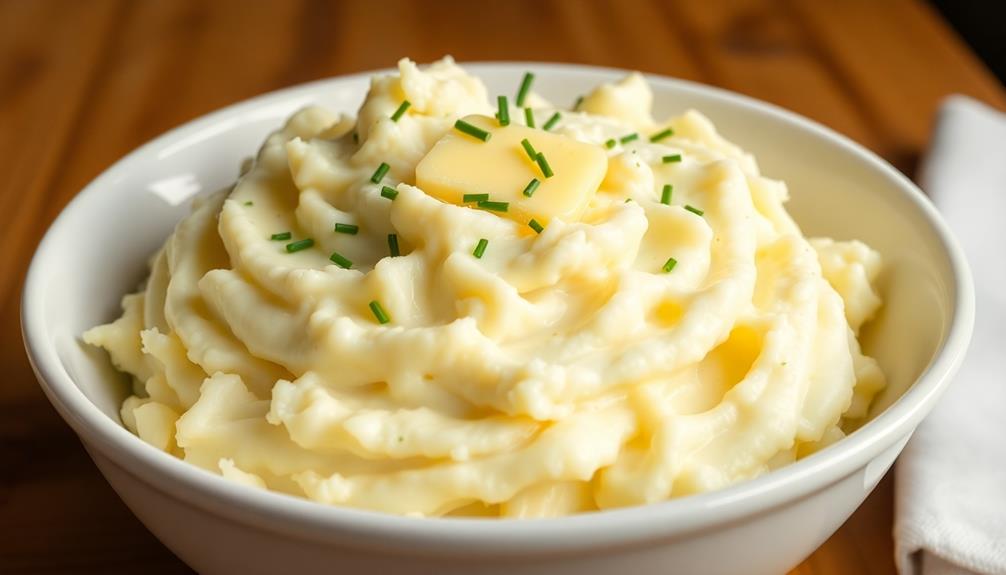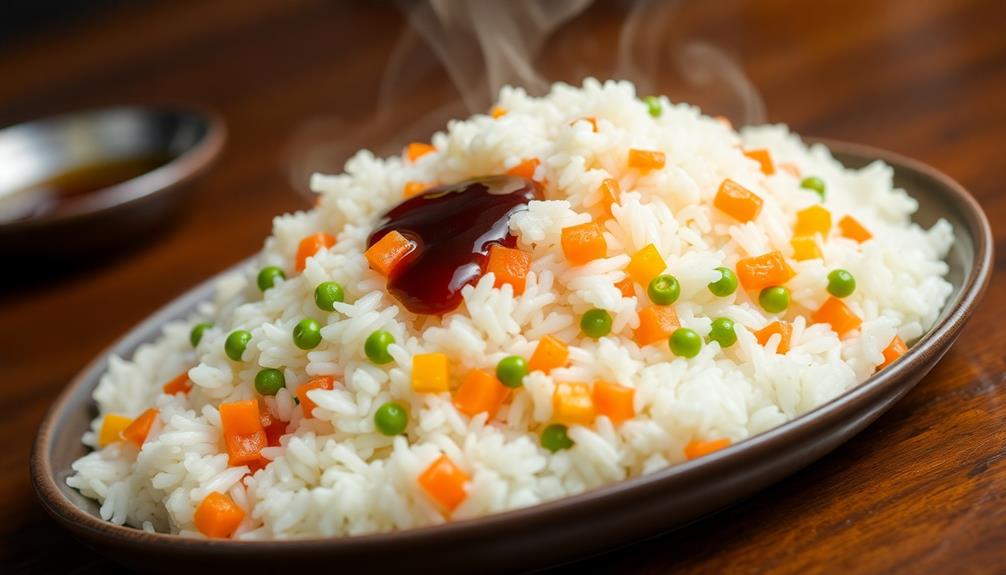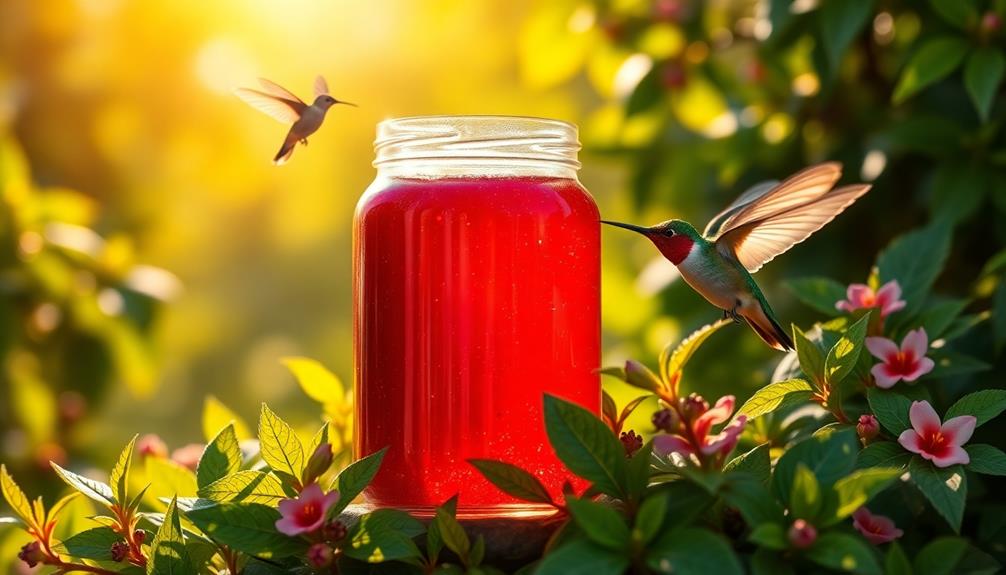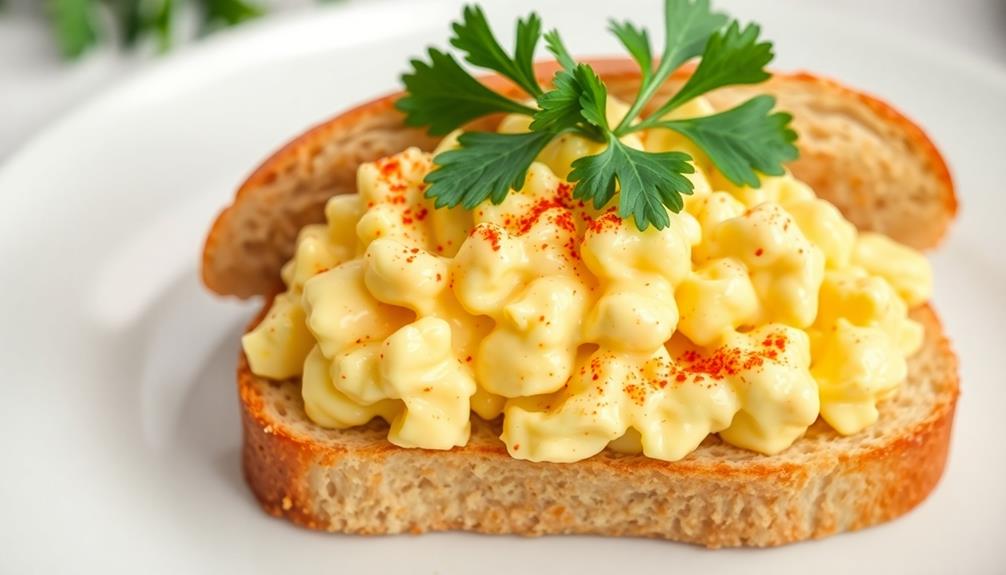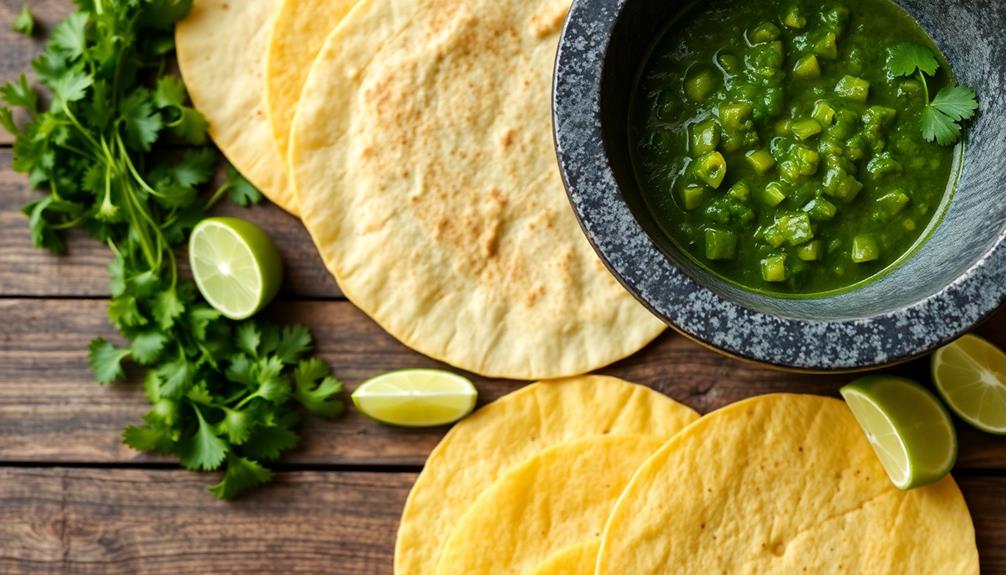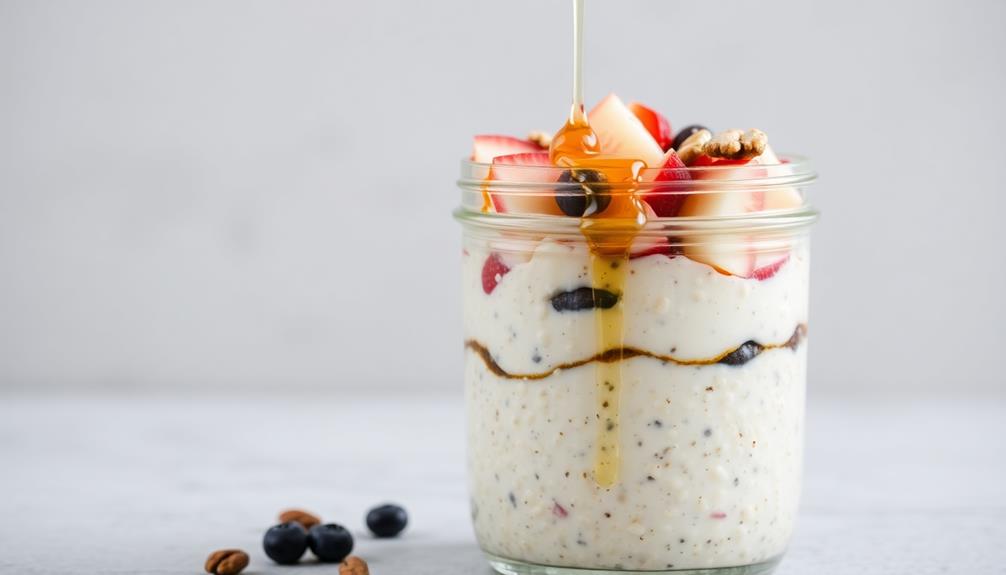Mashed potatoes have a rich history dating back centuries, first gaining popularity as a dietary staple among the working classes before becoming a beloved culinary classic. To achieve the ultimate mashed potatoes, start with starchy potatoes like Russets or Yukon Golds. Boil them until fork-tender, then mash gently to maintain a light, fluffy texture. Gradually incorporate warm milk and butter, seasoning with salt and pepper to taste. You can even get creative with add-ins like Parmesan cheese, fresh herbs, or roasted garlic. Mastering this versatile recipe is a valuable kitchen skill that will have you serving up comfort food perfection. But the story of mashed potatoes doesn't end here…
Key Takeaways
- The best potato varieties for mashed potatoes are starchy potatoes like Russets or Yukon Golds for a smooth, creamy texture.
- The essential ingredients are potatoes, warm milk, unsalted butter, salt, and pepper for a balanced and flavorful dish.
- The cooking process involves boiling the potatoes until fork-tender, then mashing them gently to avoid overworking the starch.
- Optional add-ins like Parmesan cheese, fresh herbs, or roasted garlic can enhance the flavor and create variations on the classic recipe.
- Proper techniques, such as rinsing the potatoes to remove excess starch and adjusting the milk and butter amounts, are key to achieving exceptional mashed potatoes.
History
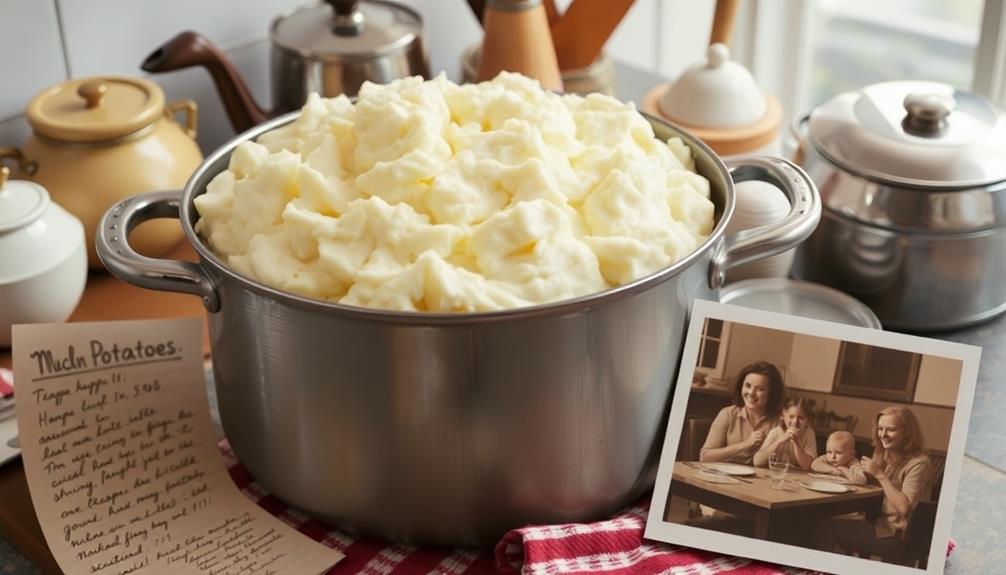
The origins of mashed potatoes can be traced back to the 16th century, when the humble potato was first introduced to Europe from South America. These starchy tubers quickly gained popularity and became a dietary staple, particularly among the working classes.
By the 18th century, mashed potatoes had become a common side dish, prized for their comforting, creamy texture and versatility.
The process of mashing potatoes likely evolved from the traditional method of boiling them and then manually smashing them with a fork or masher. This simple technique allowed cooks to transform the cooked potatoes into a smooth, spreadable consistency, perfect for pairing with a variety of main dishes.
As mashed potatoes grew in popularity, recipes and preparation methods were refined, with the addition of butter, milk, and seasonings becoming common practice.
Today, mashed potatoes remain a beloved staple, enjoyed by people of all ages and backgrounds. Their timeless appeal and ability to complement a wide range of cuisines have solidified their place as a culinary classic.
Recipe
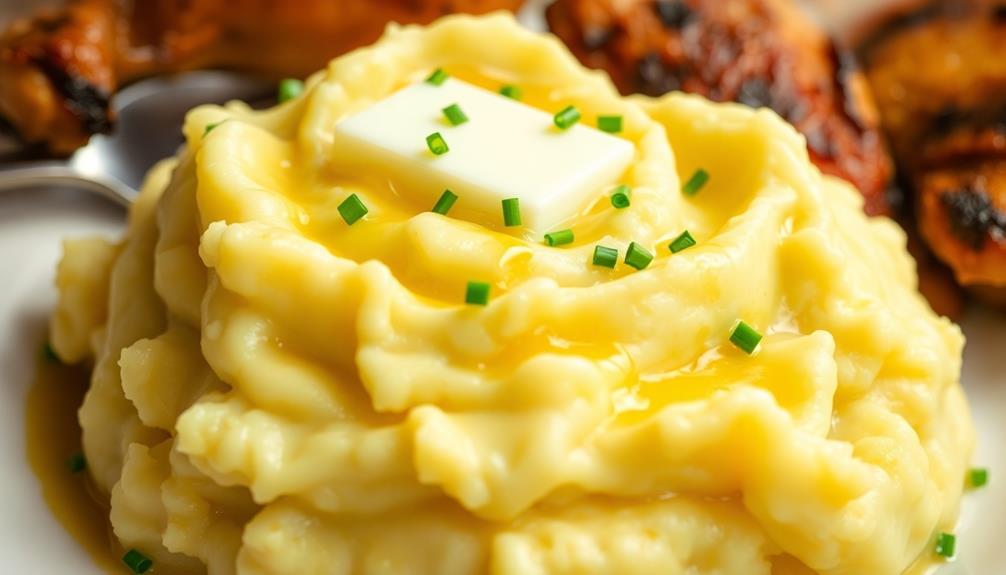
Mashed potatoes are a classic comfort food that can be enjoyed as a side dish or a base for a hearty meal. This recipe produces a creamy and flavorful mash that's sure to please.
The key to perfect mashed potatoes is to use the right variety of potato. Starchy potatoes, such as Russets or Yukon Golds, work best as they've a high starch content that results in a light and fluffy texture. Avoid waxy potatoes, as they can become gummy when mashed.
Ingredients:
- 3 pounds (1.4 kg) Russet or Yukon Gold potatoes, peeled and cut into 1-inch (2.5 cm) cubes
- 1 cup (240 ml) warm milk
- 4 tablespoons (60 g) unsalted butter, softened
- 1 teaspoon (5 ml) salt
- 1/4 teaspoon (1.25 ml) freshly ground black pepper
Instructions:
Place the cubed potatoes in a large pot and cover with cold water. Bring to a boil over high heat, then reduce the heat to medium-low and simmer until the potatoes are tender when pierced with a fork, about 15-20 minutes.
Drain the potatoes in a colander and return them to the pot.
Add the warm milk, butter, salt, and pepper to the potatoes. Using a potato masher or a hand mixer on low speed, mash the potatoes until they're smooth and creamy.
Avoid overmixing, as this can result in a gummy texture.
Tips:
For extra flavor, consider adding grated parmesan cheese, chopped fresh herbs, or roasted garlic to the mashed potatoes.
If the potatoes seem too thick, add a splash of warm milk to achieve the desired consistency.
Serve the mashed potatoes hot, with additional butter or toppings of your choice.
Cooking Steps
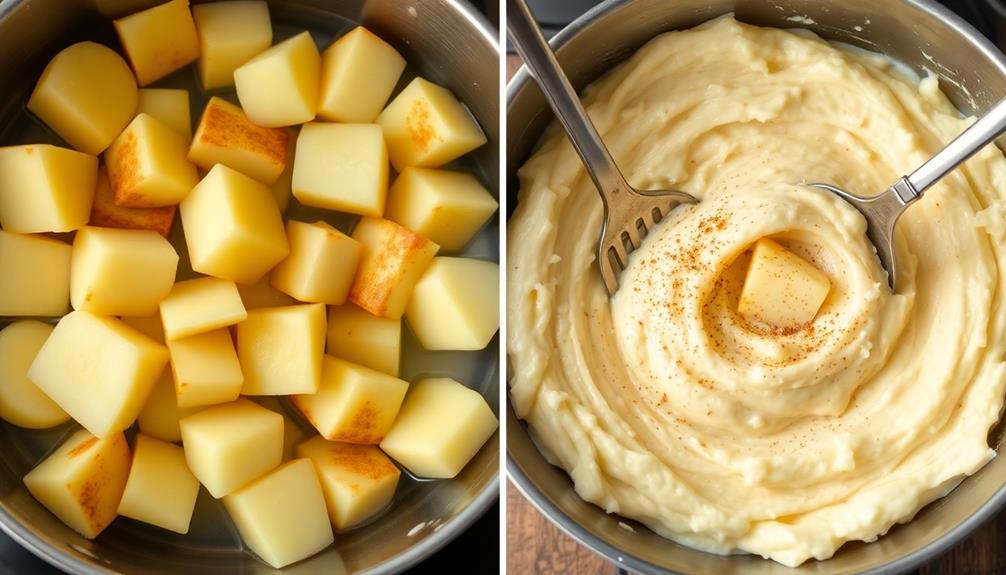
First, peel and cut your potatoes into chunks.
Bring a pot of water to a boil, then add the potato chunks and cook until they're tender, about 15-20 minutes.
Once they're cooked, drain the potatoes and return them to the pot.
Step 1. Peel and Cut Potatoes Into Chunks
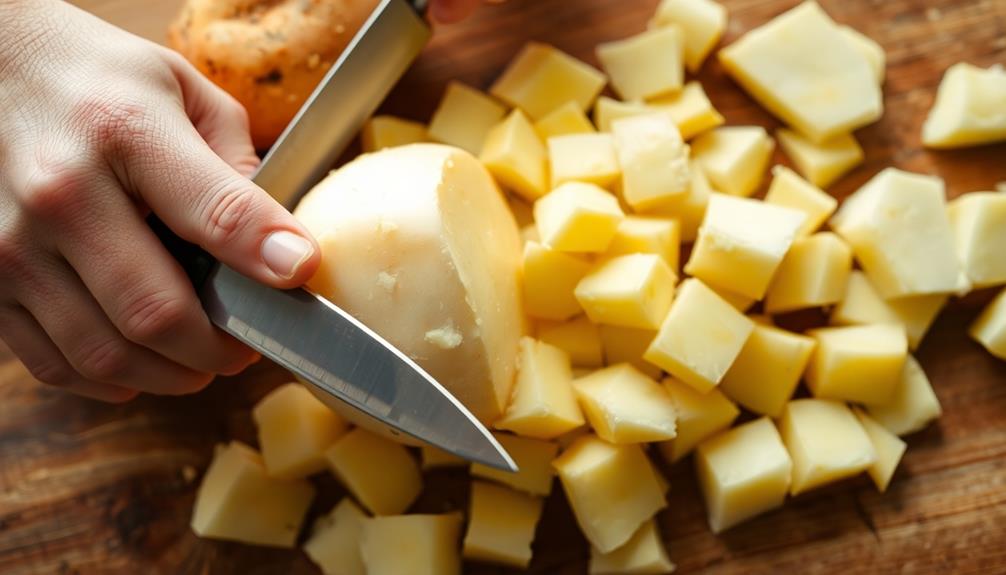
To begin, peel the potatoes and cut them into evenly-sized chunks. This step is crucial for ensuring your mashed potatoes cook through at the same rate. Use a sharp knife or vegetable peeler to remove the skins, then place the peeled potatoes on a cutting board.
Next, slice the potatoes in half lengthwise. From there, cut each half into 1-inch pieces. Aim for uniform cubes so they'll cook evenly. If some pieces are significantly larger than others, they may take longer to become tender, leading to an uneven mash.
Once the potatoes are peeled and chopped, rinse them under cool water to remove any excess starch. This step helps prevent the potatoes from becoming gummy.
Step 2. Boil the Potato Chunks
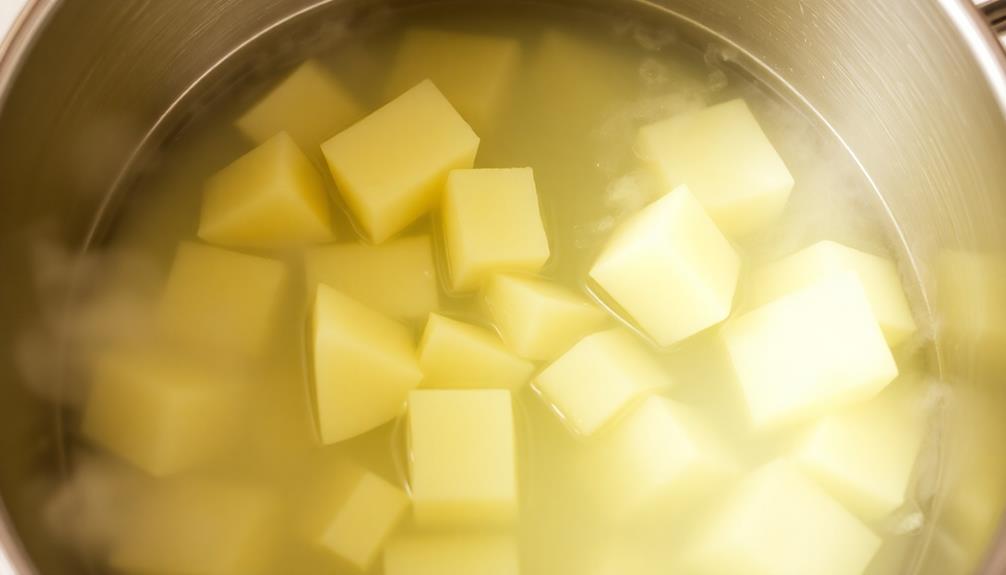
Bring the pot of water with the potato chunks to a boil over high heat. Once the water reaches a rapid boil, reduce the heat to medium-low to maintain a gentle simmer. This slower cooking method will ensure the potato chunks become tender throughout without overcooking the outsides.
Depending on the size of your potato chunks, it should take 15-20 minutes for them to become fork-tender. You'll know they're done when you can easily pierce them with a fork. Be sure to keep an eye on the pot and adjust the heat as needed to maintain that gentle simmer.
Overcooking the potatoes will lead to a gummy, unappetizing texture, so it's important to strike the right balance.
Once the potatoes are fork-tender, it's time to drain them. Carefully pour the contents of the pot through a colander in the sink, allowing the hot water to fully drain away.
With the potatoes prepped, you're now ready to move on to the next step – mashing them to create your perfect mashed potatoes! To begin, drain the cooked potatoes thoroughly and return them to the pot, allowing any excess steam to escape. For silky smooth mashed potatoes, use a potato masher or ricer while the potatoes are still hot, gradually adding butter and warm milk to achieve the right consistency. If you’re wondering **how to make perfect mashed potatoes**, don’t forget to season them generously with salt and pepper, making sure to taste as you go for the best results.
Step 3. Drain and Return to Pot
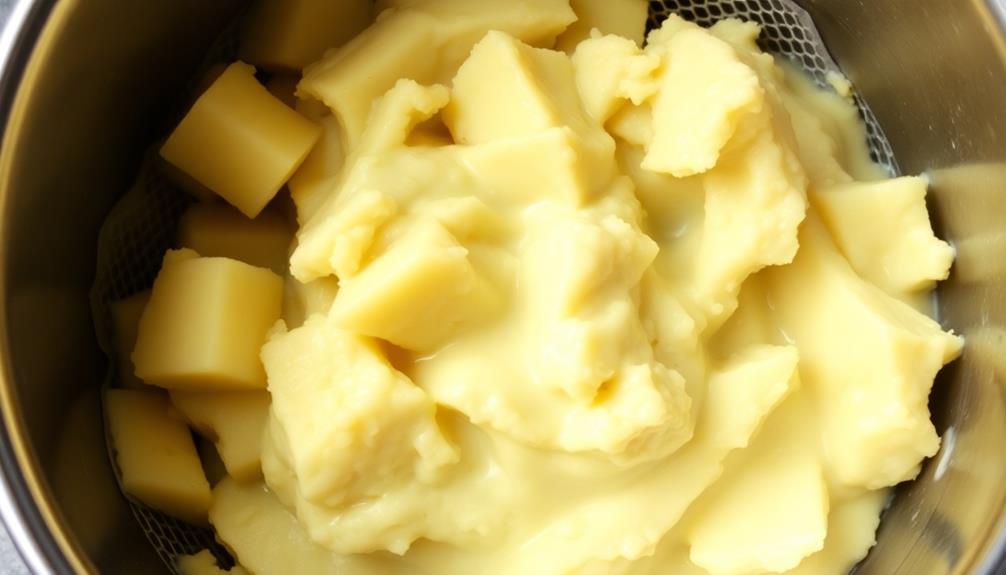
After draining the cooked potato chunks, return them to the empty pot. This step is crucial, as it allows the potatoes to continue steaming and drying out slightly, resulting in a fluffier, more cohesive mash.
Use a sturdy spoon or potato masher to gently break down the potatoes, taking care not to overmix and create a gluey texture.
Once the potatoes are back in the pot, let them sit for 2-3 minutes, stirring occasionally. This brief resting period allows any excess moisture to evaporate, further improving the texture.
Now, it's time to add your desired mix-ins, such as milk, butter, salt, and pepper. Start with smaller amounts, tasting and adjusting as needed to achieve your perfect mashed potato consistency and flavor profile.
Step 4. Mash Potatoes With a Potato Masher
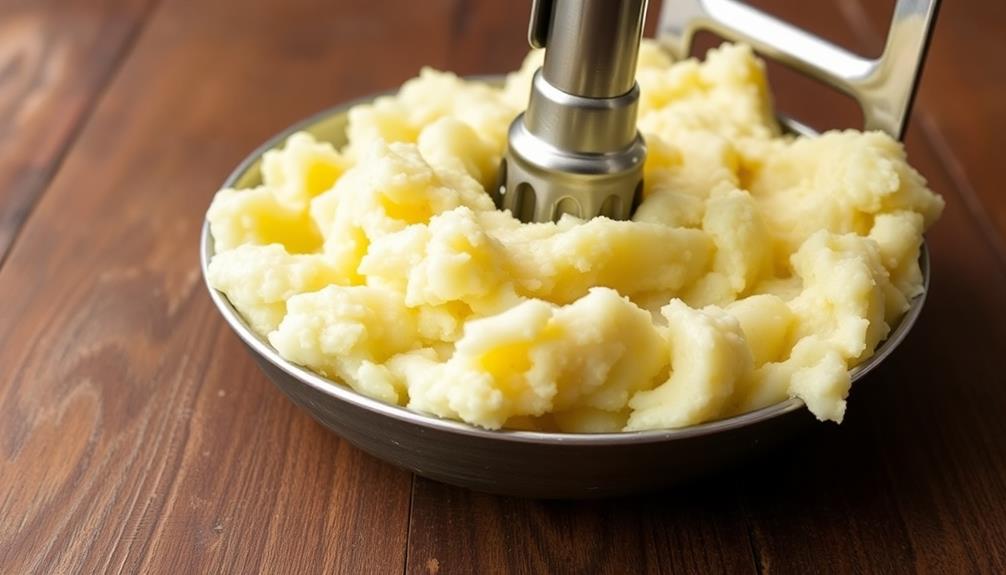
With the potatoes back in the pot, it's time to start mashing. Grab your trusty potato masher and position it over the steaming hot potatoes. Apply gentle yet firm pressure, mashing the potatoes in a circular motion. This helps to break down the starchy spuds, transforming them into a smooth, creamy consistency.
As you mash, keep an eye on the texture. You want to avoid over-mashing, which can result in a gluey, gummy mash. The ideal texture is light, fluffy, and slightly chunky. Pause periodically to assess the progress, ensuring you reach your desired level of smoothness.
- Mash the potatoes in a circular motion
- Aim for a light, fluffy, and slightly chunky texture
- Don't over-mash, as this can lead to a gluey consistency
Once the potatoes are mashed to your liking, you're ready to move on to the next step: adding the finishing touches that will make your mashed potatoes truly irresistible.
Step 5. Add Butter and Milk
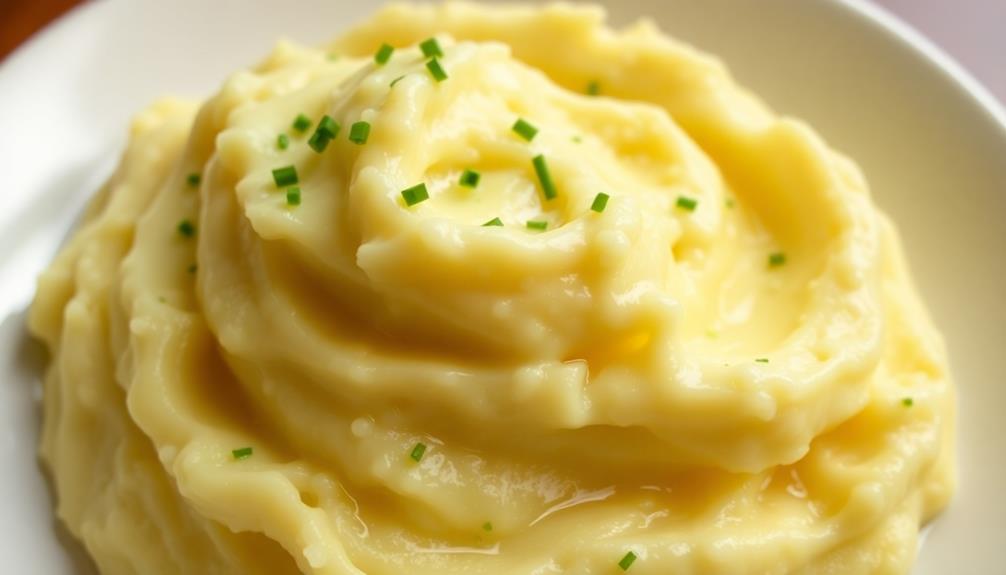
To create the perfect mashed potatoes, add a generous amount of butter and milk. This crucial step is what transforms your mashed potatoes from ordinary to extraordinary. The butter adds a rich, creamy texture and a delicious flavor, while the milk helps to thin out the mixture, making it light and fluffy.
When adding the butter, start with about 4 tablespoons per 2 pounds of potatoes. Gently stir the butter into the warm, mashed potatoes until it's fully incorporated.
Then, slowly pour in about 1/2 cup of milk, mixing continuously until the desired consistency is achieved. You may need to add a bit more milk, depending on how dry or lumpy your potatoes are.
The key is to add the butter and milk gradually, tasting and adjusting as you go. This allows you to achieve the perfect balance of flavors and texture.
With just a few simple additions, your mashed potatoes will be elevated to new heights of creaminess and deliciousness. By incorporating a dollop of sour cream or cream cheese, a generous pat of butter, and a splash of warm milk, you can achieve a velvety texture that’s hard to resist. For an extra layer of flavor, try mixing in roasted garlic or freshly chopped herbs like chives or parsley. This perfect mashed potatoes recipe will quickly become a staple at your dinner table, cherished by family and guests alike.
Final Thoughts
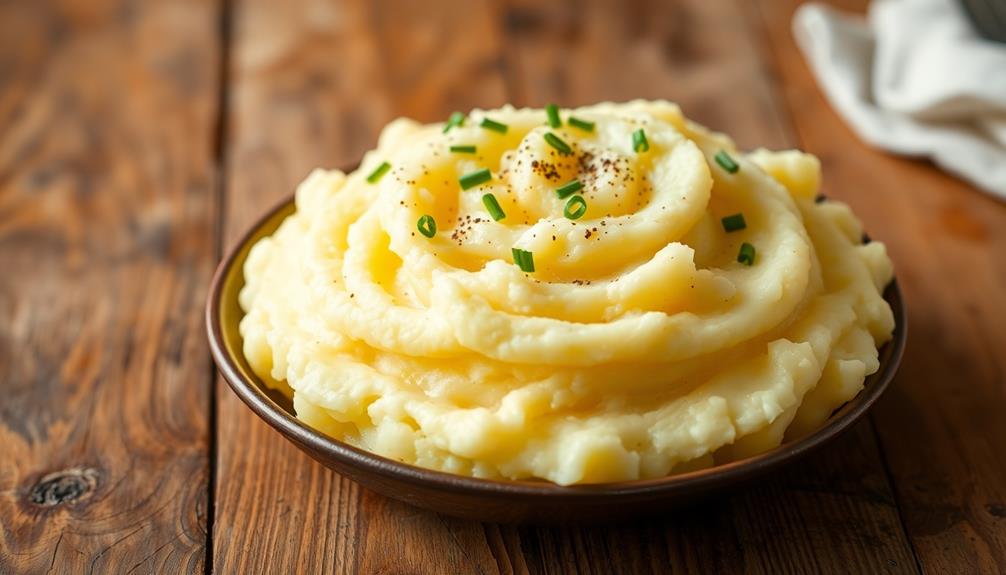
Mashed potatoes rank among the most cherished of comfort foods. Whether you enjoy them as a side dish or as the centerpiece of a hearty meal, mastering the art of making perfect mashed potatoes is a kitchen skill worth pursuing.
Now that you've added the butter and milk, it's time to give your potatoes a final stir and enjoy the fruits of your labor. The key to truly exceptional mashed potatoes lies in the balance of flavors and textures.
The silky, creamy consistency should be punctuated by the occasional lump, a testament to the rustic nature of this beloved dish.
As you savor each bite, remember that the joy of mashed potatoes extends far beyond the plate. This humble dish has the power to evoke memories, bring people together, and provide a sense of warmth and contentment.
Frequently Asked Questions
How Long Do Mashed Potatoes Keep in the Fridge?
Mashed potatoes can generally keep in the fridge for 3-5 days. Be sure to store them in an airtight container. If they start to smell or look discolored, it's best to toss them out and make a fresh batch.
Can I Make Mashed Potatoes Ahead of Time?
Yes, you can make mashed potatoes ahead of time. Simply prepare the mashed potatoes, let them cool, then store them in an airtight container in the refrigerator for up to 3-4 days. When ready to serve, just reheat them gently.
What Type of Potatoes Are Best for Mashing?
For the best mashed potatoes, you'll want to use starchy potatoes like Yukon Gold or Russet. These varieties have a high starch content, which gives the mashed potatoes a creamy, smooth texture when mashed.
How Do I Make Mashed Potatoes Creamy and Smooth?
To make mashed potatoes creamy and smooth, use a ricer or potato masher to thoroughly mash the cooked potatoes. Then, gradually add warm milk or cream, butter, and seasonings, beating vigorously until the desired consistency is achieved.
Can I Freeze Leftover Mashed Potatoes?
Yes, you can freeze leftover mashed potatoes. Just let them cool completely, then transfer to an airtight container or freezer bag. When you're ready to use them, thaw in the refrigerator overnight and reheat gently on the stovetop or in the microwave.
